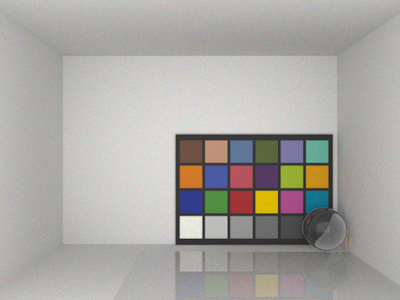I just put my new renderer through the Cornell Box test using
this data from the Cornell lab. I didn't want to type in all those numbers for the boxes, nor deal with the slightly wonky walls that aren't necessarily planar (the real walls aren't). So here is my geometry for it (in millimeters like the Cornell measurements):
Box itself: (0,0,0) to (555,555,555)
Small block: (0,0,0) to (165,165,165), rotate around Y -0.314 radians, move (130,0,65)
Big block: (0,0,0) to (165,330,165), rotate around Y +0.3925 radians, move (265,0,295)
For fun I made the materials of the block glass and copper. I used the metal Fresnel equations from this
very nice post by S Legarde.
This is still brute force so the rays just have to be lucky enough to hit the light (100k initial rays per pixel)

















